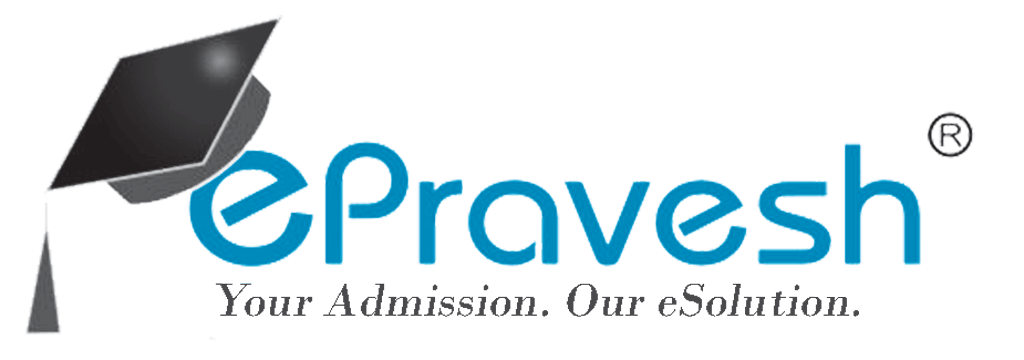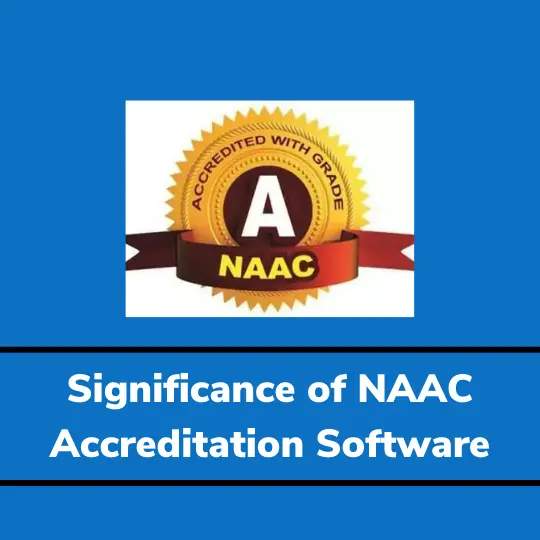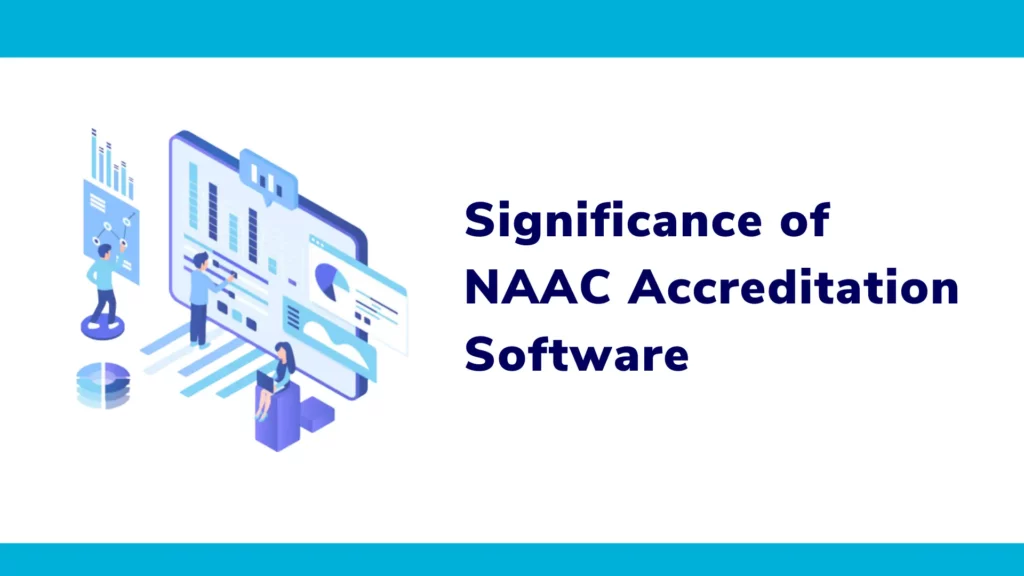
Article Contents
Introduction:
Accreditation plays a vital role in assessing and benchmarking the quality of higher education institutions. The National Assessment and Accreditation Council (NAAC) in India provides a framework for evaluating and accrediting institutions based on various parameters.
With the increasing complexity and volume of data in the accreditation process, institutions recognize the need for dedicated NAAC accreditation software. This article explores the features, merits, demerits, and ultimate value of implementing NAAC accreditation software.

The NAAC evaluates institutions based on criteria covering various aspects of the institution’s functioning. Here is a brief overview of the NAAC criteria and some essential points associated with each criterion-
NAAC Criteria and Weightage-
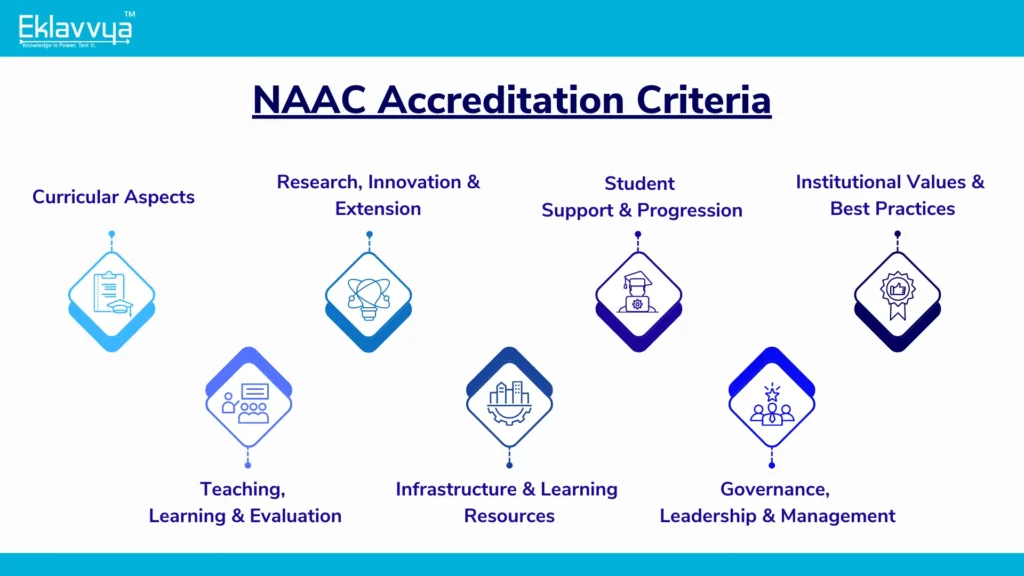
Criterion 1 & Weightage: Curricular Aspects: [150 (U), 150 (Au) 100 (Aff UG), 100 (Aff PG)]
Focus on the relevance and quality of the curriculum, flexibility in curriculum design, the inclusion of interdisciplinary courses, use of technology in the teaching-learning process, and regular curriculum review and update.
Criterion 2 & Weightage: Teaching-Learning and Evaluation [200 (U), 300 (Au), 350 (Aff UG), 350 (Aff PG)]
Emphasis on effective teaching methods, learner-centric approaches, innovative teaching techniques, continuous evaluation methods, feedback mechanisms, student counselling, and support services.
Criterion 3 & Weightage: Research, Innovations, and Extension [250 (U),150 (Au),110 (Aff UG),120 (Aff PG)]
Encouragement for research and innovation, publications in reputed journals, patents and copyrights, industry-academia collaborations, extension activities, community engagement, social responsibility initiatives, and outreach programs.
Criterion 4 & Weightage: Infrastructure and Learning Resources [100 (U), 100 (Au), 100 (Aff UG), 100 (Aff PG)]
Availability and adequacy of physical infrastructure, classrooms, laboratories, libraries, sports facilities, ICT resources, Wi-Fi connectivity, learning resources, maintenance of facilities, and accessibility for students with disabilities.
Criterion 5 & Weightage: Student Support and Progression [100 (U),100 (Au), 140 (Aff UG),130 (Aff PG)]
Student support services, mentoring systems, counselling facilities, career guidance, placement support, support for scholarships and financial aid, measures for student progression, monitoring student progress, and initiatives for student welfare.
Criterion 6 & Weightage: Governance, Leadership, and Management [100 (U), 100 (Au), 100 (Aff UG), 100 (Aff PG)]
Transparent and efficient governance structure, participatory decision-making, academic and administrative autonomy, leadership qualities, management practices, accountability mechanisms, financial management, and adherence to statutory requirements.
Criterion 7 & Weightage: Institutional Values and Best Practices [100 (U), 100 (Au),100 (Aff UG), 100 (Aff PG)]
Promotion of core values, ethical practices, academic integrity, gender equality, inclusivity, social and environmental responsibility, preservation of cultural heritage, promotion of best practices, and benchmarking with national and international standards.

Features of Eklavvya- Process Automation Platform–
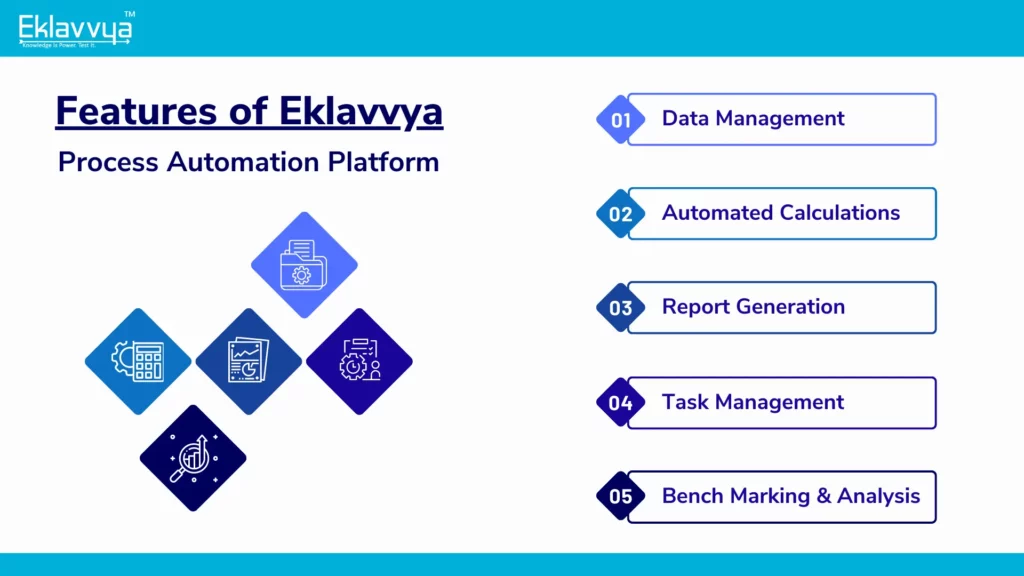
NAAC Accreditation Software is having following features such as-
1. Data Management:
NAAC accreditation software efficiently manages and organizes the vast amounts of data required for the accreditation process. It allows institutions to input and store data related to infrastructure, faculty qualifications, student performance, research output, and other essential parameters with respect to 5 years of data.
2. Automated Calculations:
The software automates the calculation of scores based on predefined metrics, eliminating the need for manual calculations. This reduces human errors and ensures consistent and accurate evaluation.
3. Report Generation:
NAAC accreditation software simplifies the generation of comprehensive reports by automating the compilation of data. It enables institutions to create detailed reports that provide insights into their performance, strengths, weaknesses, and areas for improvement.
4. Task Management:
The software streamlines the accreditation workflow by assigning tasks, deadlines, and tracking progress. It enables collaboration among different departments and stakeholders, ensuring a smooth and coordinated accreditation process.
5. Benchmarking and Analysis:
NAAC accreditation software allows institutions to establish benchmarks based on industry standards and peer institutions’ performance. It provides analytical tools to assess and compare an institution’s performance, identify gaps, and make data-driven decisions for improvement.

Merits of NAAC Accreditation Software:
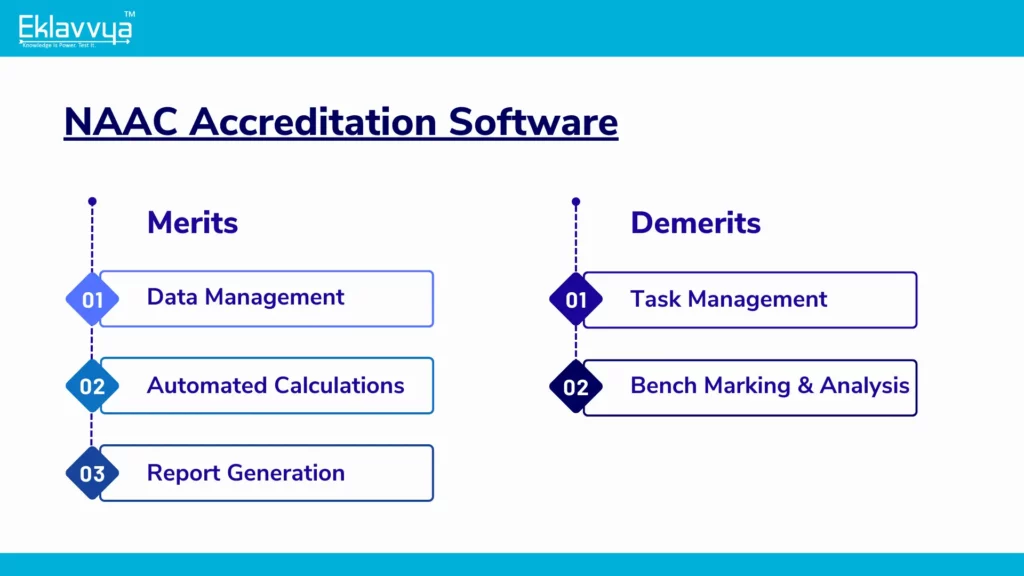
1. Efficiency and Time Savings:
Implementing NAAC accreditation software significantly reduces the time and effort required for data collection, analysis, and reporting. Automated processes streamline the workflow, allowing institutions to focus more on strategic planning and improvement initiatives.
2. Accuracy and Consistency:
The software minimizes human errors associated with manual data entry and calculations. It ensures consistent evaluation by adhering to predefined metrics and benchmarks, leading to fair and reliable assessments.
3. Data-Driven Decision Making:
NAAC accreditation software provides institutions with valuable insights through data analytics. It enables evidence-based decision-making by identifying trends, patterns, and areas requiring attention. This promotes targeted improvements and enhances the institution’s overall quality.
Demerits of NAAC Accreditation Software:
1. Initial Implementation Challenges:
Introducing NAAC accreditation software may require initial investments in terms of infrastructure, training, and customization. Institutions may face challenges during the transition phase, including data migration and staff adaptability.
2. Dependency on Technology:
Relying heavily on technology can introduce vulnerabilities such as system failures, data breaches, or compatibility issues. Institutions must ensure robust security measures and backup systems to mitigate these risks.
Splashgain Technology presents Eklavvya, a cutting-edge Process Automation Platform NAAC software designed to streamline data management and report generation for educational institutes and universities.
With Eklavvya, institutes can effortlessly handle their assessment processes, and accreditation procedures, and generate comprehensive reports with ease. Simplify and enhance your institution’s workflow with Eklavvya from Splashgain Technology.
While implementing new technology solutions, such as the Eklavvya – Process Automation Platform NAAC software from Splashgain Technology, there may be initial challenges. However, Splashgain Technology is equipped to handle and overcome these challenges smoothly.
Our software ensures seamless management of technology dependencies, making the transition process efficient and effective. With Eklavvya, institutes can confidently navigate and address any potential hurdles related to technology integration.
Conclusion:
NAAC accreditation software has become an essential tool for higher education institutions seeking accreditation. Its features, including efficient data management, automated calculations, comprehensive reporting, and task management, significantly enhance the accreditation process. The merits of such software include increased efficiency, accuracy, and data-driven decision-making, which ultimately contribute to institutional growth and excellence.
However, institutions should be aware of potential challenges, such as initial implementation hurdles and technology dependencies, and take proactive measures to address them. Overall, adopting NAAC accreditation software empowers institutions to streamline their processes, meet accreditation requirements effectively, and continually improve their educational quality.
